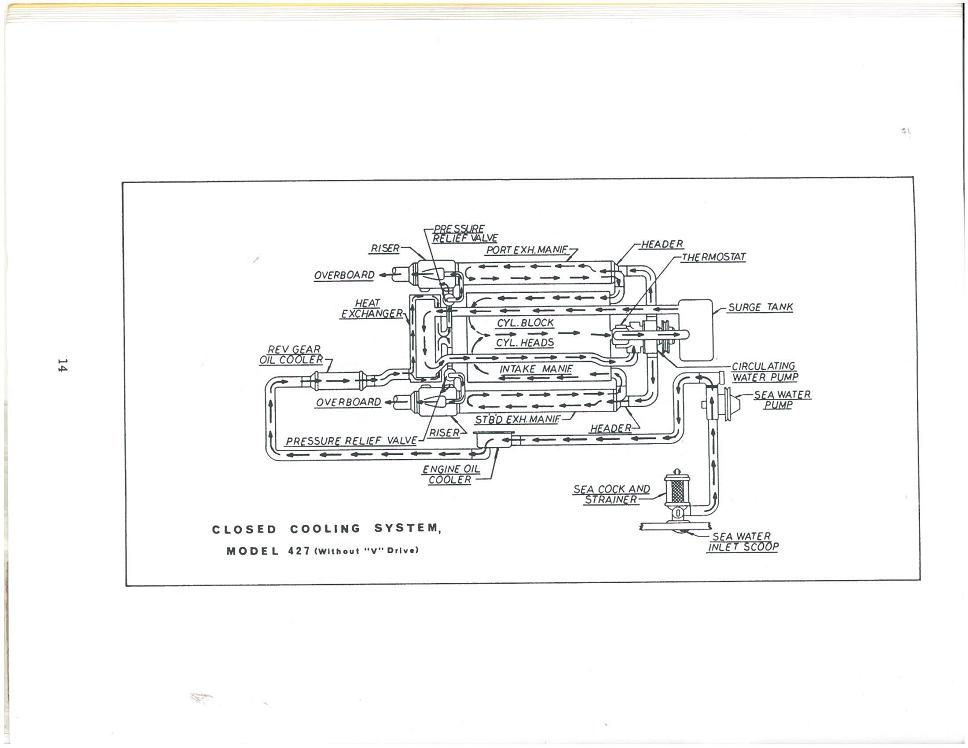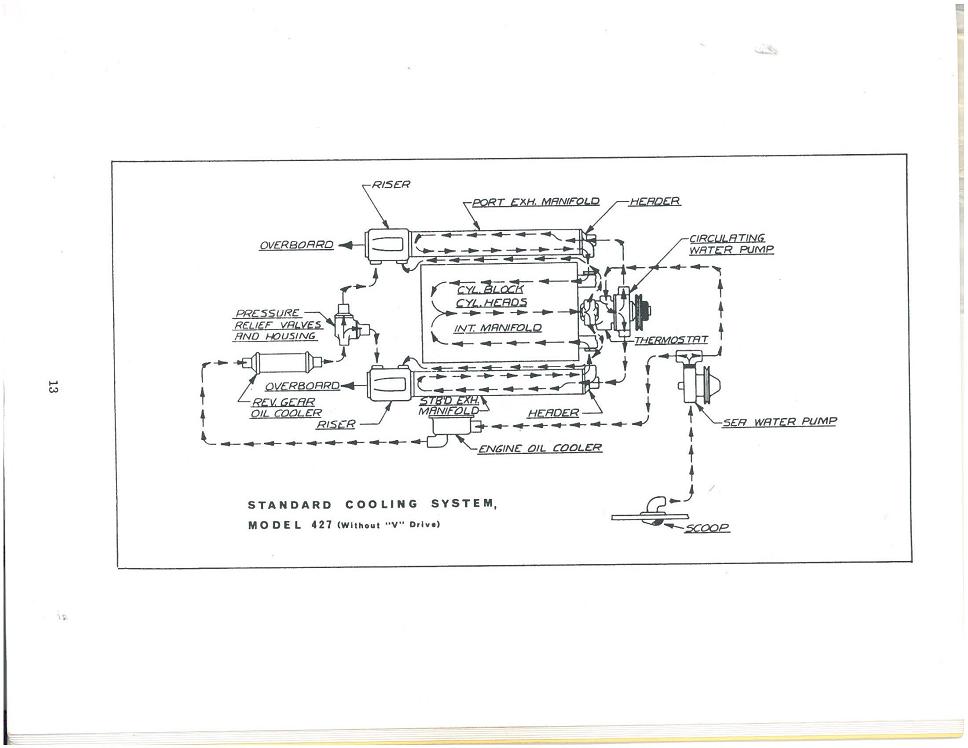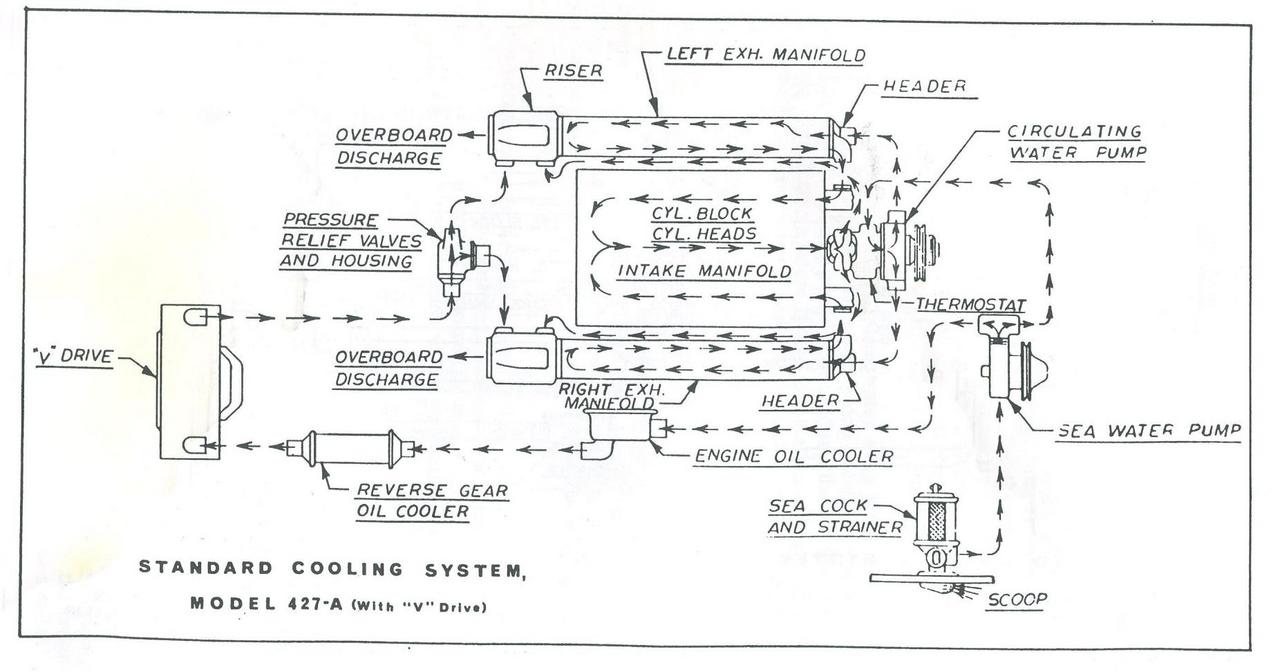There have been a lot of threads here on The Forum about overheating, and most of the causes are well known and well documented. Issues like
rubber impellers needing replacement,
cams in the old Sherwood pumps being so worn they don't create the necessary suction any more (replacement cams for these pumps are available for $35),
air getting into the system which causes loss of pumping capability,
internal blockage,
bad circulator pumps,
thermostats,
corroded heat exchangersetc. I have heard about using muratic acid to clean out the oil cooler and quite frankly, I think this is dangerous and unnecessary except for extreme situations. However, there are some other things that can cause a motor to overheat, which are not discussed very often.
There can also be a
clogged oil cooler, which on some motors (closed versus standard cooling) will make more of an impact than others, take a look at the diagrams here and you can see why. The
pressure regulator valves are well documented here on The Forum too, and they help assure you get FULL WATER to the standard cooled motor when your boat is running at idle speed, and they help bleed off excess pressure at high rpm. If the PRV is stuck open on the stancard cooling system, then you'll overheat at low rpm. On the closed cooling system (see diagram) the PRV system seems to only function as an emergency pressure relief device, and the closed system, you'll note the clogged oil cooler can affect the entire cooling flow to the heat exchanger. Exhaust lines and
exhaust manifold internal passages can become clogged, causing a short circuit in the system, which can lead to overheating.
Now.................for four things that can also lead to overheating, which are seldom discussed:
1.
Late ignition timing.
2.
Valve lash in need of adjustment.
3.
Collapsed water pump suction hose; this one can be tough, because sometimes the hose fails on the inside and it is not visible on the outside. Your motor may run fine at low rpm, but the internal hose structure can be sucking in as rpm increases, causing a higher rpm starvation right when you need more water.
4. And on those freshly rebuilt motors,
a wrong rotation circulating pump installed on a motor that is intended to spin in the opposite way. The 427 circulating pump is rotation specific. This means a RH pump is REQUIRED for a RH motor. You can bolt a LH pump to a RH motor and it might pump a little water, but I think it is safe to say you'll have overheating problems. Here is a thread with photos of the 427 circulating pump, and its directional cast bronze impeller.
http://www.network54.com/Forum/424840/message/1182358080



In case anyone is looking forward to standing on their head in the bilge, going after that sea water pump and changing out the rubber impeller, here is a great thread here on The Forum showing the internals and how to do it.
http://www.network54.com/Forum/424840/message/1156595176.
Regards,
Paul